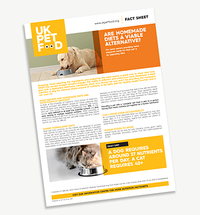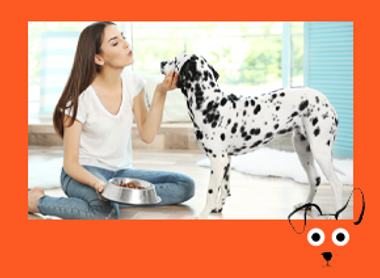

So, we've put together this helpful guide on dog nutrition and compiled all of our best resources to help educate you in keeping your favourite furry friend happy and healthy.
Dogs and cats have different nutritional needs than humans and each other. They need a balanced diet that contains just the right amount of proteins, fats and carbohydrates, as well as essential vitamins and minerals, to stay in peak condition. Nutrients must be present in the correct amounts for their stage in life and in the correct proportion to each other, in order to provide a nutritionally complete and balanced diet.
For example, small breed dogs need more calories per kilo than larger dogs, meaning they need food that is ‘energy dense’ to allow them to eat enough food for their energy requirements. It's also important to note that the nutritional needs of dogs can vary throughout their lives depending on their activity levels and age.

Commercially prepared pet food is a very popular way to feed cats and dogs, and in most cases, it is the best way to ensure they get the nutrition they need to thrive physically and mentally.
By selecting a nutritionally complete, prepared pet food for your pet type, you are feeding a food developed to provide a healthy, balanced diet in their bowl every meal, every day. You can choose a prepared pet food to suit all shapes and sizes, whether they are small or large breeds, as well as if they are puppies or adults.
For some owners, home-preparing meals for their dog might sound appealing. However, the reality is that most homemade diets are nutritionally deficient. Dogs require around 37 nutrients per day and whilst providing a nutritionally balanced diet from home is not impossible, it is a complicated task with very little margin for error. We've created this fact sheet for our advice on whether a homemade diet is a viable option for your dog.

Visit the Directories & Useful Links section of our Industry Hub, for more detail.
Your vet can recommend you to relevant sources for information. However, tailoring a specific diet for your pet that takes into consideration factors such as life stage or lifestyle, their age or levels of activity, you may need to find a vet or animal nutritionist with a particular expertise in this are.
Visit our Directories & useful links section to search for UK Pet Food members who can advise on this area.